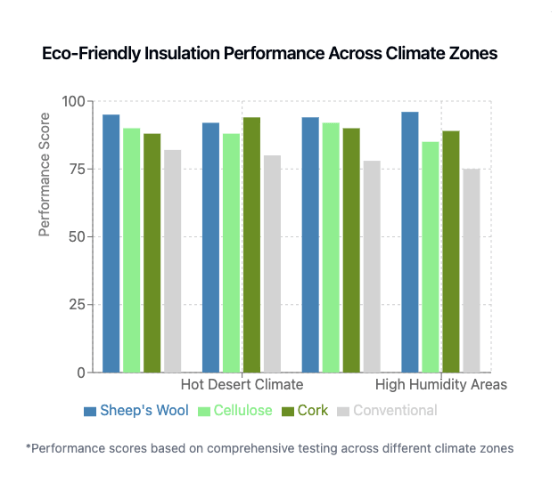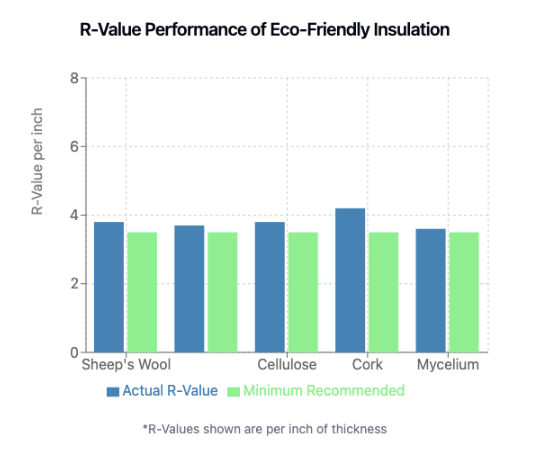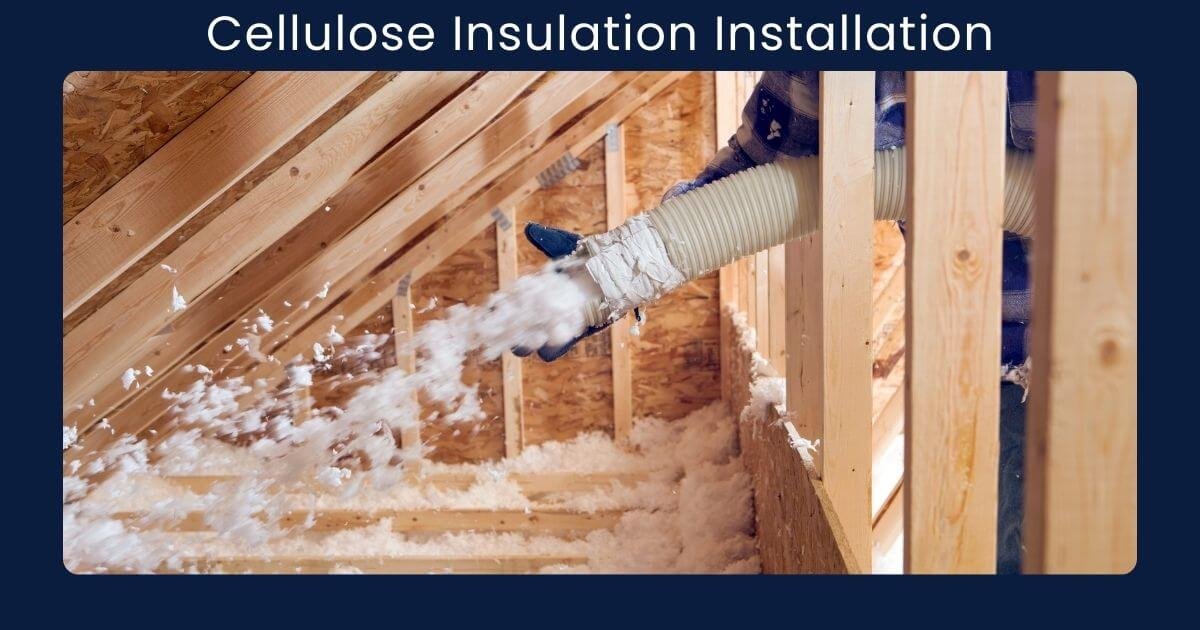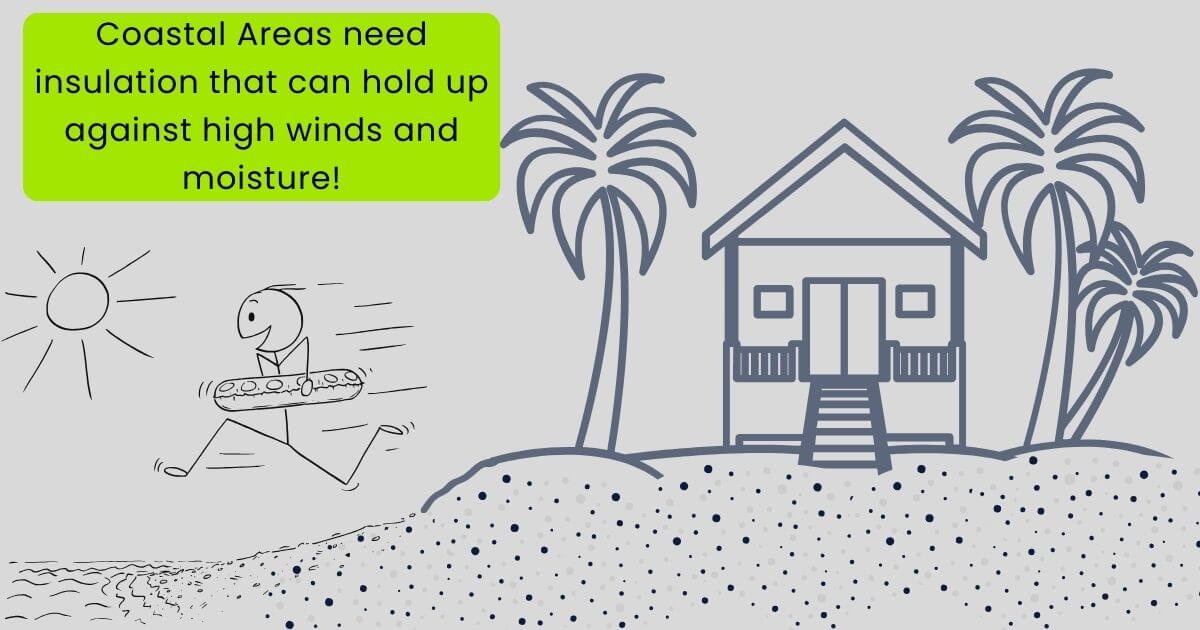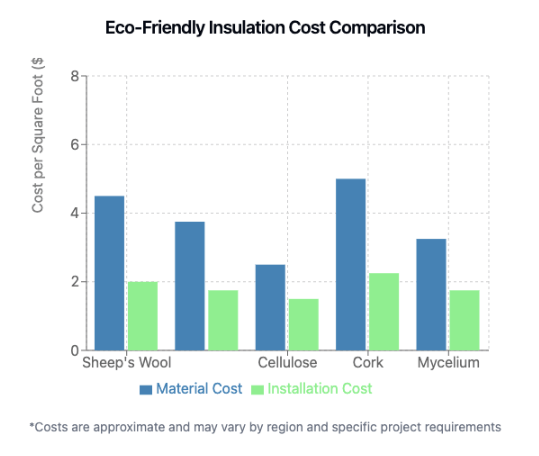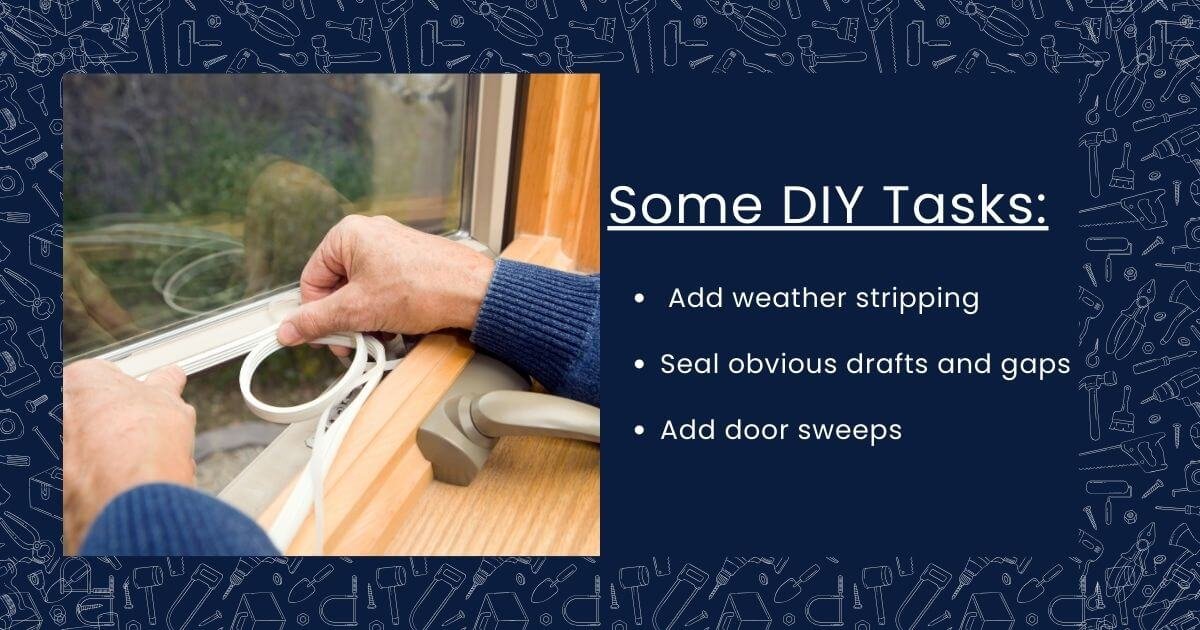Eco Friendly Insulation: Sustainable Solutions for Your Home
Ever wondered if your insulation choices could help save the planet while keeping your home cozy? You're not alone! More homeowners are discovering that sustainable building materials can make their homes more comfortable and environmentally friendly. Let's dive into the world of eco-friendly insulation and explore how these green building materials can transform your home.
Why Choose Eco-Friendly Insulation?
Think of eco-friendly insulation as your home's reusable coffee cup – it does the same job as disposable options but with a much smaller environmental footprint. These sustainable insulation materials work just as effectively as traditional choices while being kinder to our planet. When you choose environmentally friendly insulation, you're not just making a choice for your home – you're making a choice for future generations.
The benefits of green insulation extend far beyond environmental impact. These materials often provide superior performance in terms of both thermal resistance and sound dampening. Plus, they typically create healthier indoor environments by avoiding the harmful chemicals often found in conventional insulation materials.
Key Benefits at a Glance
Lower carbon footprint during manufacturing
Reduced energy consumption in your home
Minimal waste at the end of their life cycle
Better indoor air quality
Understanding Climate and Regional Requirements
Before diving into specific materials, let's understand how different regions require different approaches to insulation:
Each climate zone presents unique challenges for building insulation materials. The right combination of materials and R-value ensures optimal performance while maintaining minimal environmental impact throughout the life cycle.
Performance Across Climate Conditions
Different types of eco-friendly insulation materials excel in various environments:
These sustainable insulation materials consistently outperform conventional options while offering superior thermal properties and fire resistant qualities. Their effectiveness spans across different climate conditions, making them versatile choices for any construction projects.
Seasonal Performance and Adaptation
The true test of effective insulation comes from its year-round performance:
Whatever it is, the way you tell your story online can make Modern eco-friendly insulation material adapts to changing seasons, providing excellent thermal resistance in both hot and cold conditions. This adaptability makes them especially valuable in areas with variable climates.
Understanding R-Value and Material Performance
R-value serves as a key indicator of insulation effectiveness. Let's compare how different sustainable materials measure up:
These measurements demonstrate that eco friendly options provide exceptional thermal insulation while maintaining their strong insulator properties over time.
Innovative Green Building Materials
The world of sustainable insulation continues to evolve, with exciting new options emerging regularly. While some of these materials are new and harder to come by, let's explore the most innovative materials changing the way we think about eco-friendly insulation.
1. Sheep's Wool: The Natural Wonder
Remember how cozy your favorite wool sweater keeps you? Sheep's wool insulation works the same way, but for your entire house! This remarkable sustainable building material has been used for centuries, and modern processing techniques have only enhanced its natural properties.
What makes sheep's wool truly special is its ability to regulate humidity naturally. When moisture levels rise, the wool absorbs excess humidity, releasing it later when the air becomes drier. This natural process helps prevent condensation and mold growth while maintaining consistent indoor comfort levels.
Major Advantages:
Naturally fire resistant
Excellent at managing moisture
100% renewable resource
Biodegradable at the end of its life
2. Cellulose Insulation: From Past to Future
Cellulose insulation transforms yesterday's newspapers into tomorrow's energy savings. This innovative approach to recycling creates an effective insulation material while significantly reducing landfill waste. The process involves breaking down paper products into small fibers and treating them with natural fire retardants.
Modern cellulose insulation offers impressive performance benefits that often surpass traditional options. Its ability to fill small spaces and conform to irregular areas makes it particularly effective at preventing air leakage. Plus, the manufacturing process requires significantly less energy than producing fiberglass or foam insulation.
3. Cork: Not Just for Wine Bottles
Cork insulation represents one of nature's most remarkable building materials. Harvested from cork oak trees in a process that actually benefits the tree's health, cork insulation offers a unique combination of thermal efficiency and sustainability. The harvesting process allows these trees to absorb more CO2, making cork insulation a carbon-negative material.
Here's what makes cork truly special:
Regenerates every 9 years without harming trees
Naturally pest resistant
Adds unique aesthetic appeal to your home
Provides excellent acoustic properties
4. Mycelium: The Future is Fungi
Now here's something truly revolutionary in sustainable building materials – insulation grown from mushrooms! This innovative material is changing the game in eco-friendly construction. Mycelium insulation is literally grown rather than manufactured, using agricultural waste as its food source.
The growing process takes just a week, and the final product offers impressive insulation properties while being completely biodegradable. When its useful life ends, mycelium insulation can be crushed up and used as garden compost, creating a truly circular lifecycle.
<img src="/api/placeholder/600/400" alt="Mycelium-based insulation samples">
5. Recycled Denim: From Blue Jeans to Green Dreams
Who knew your old jeans could keep your house warm? Recycled denim insulation represents a creative solution to textile waste while providing excellent insulation properties. The manufacturing process takes post-consumer denim, breaks it down into fibers, and treats it with a natural fire retardant before transforming it into effective home insulation.
The dense fiber structure of denim makes it particularly effective at sound dampening, making it an excellent choice for home theaters, music rooms, or anywhere you want to reduce noise transmission. Installation is also remarkably straightforward, as the material can be cut with standard tools and doesn't require special protective equipment.
Environmental Impact Throughout the Life Cycle
Understanding the environmental impact of insulation materials means looking beyond just their insulating properties. Environmental building specialists often point out that the true sustainability of building materials can only be measured by examining their entire life cycle – from raw material extraction to end-of-life disposal or recycling.
The Journey Begins: Sourcing and Manufacturing
The story of sustainable insulation starts with raw material sourcing. The difference between renewable and non-renewable resources becomes clear when we look at the numbers. For example, sheep's wool insulation requires about 15% of the energy needed to produce traditional fiberglass insulation.
Raw Material Considerations:
Emphasis on renewable materials
Use of recycled materials
Sustainable supply chain practices
Reduced carbon footprint
Manufacturing Impact:
Energy efficient production
Minimal waste generation
Low environmental impact
Reduced greenhouse gas emissions
Environmental Benefits:
Cork bark harvesting actually increases the tree's CO2 absorption
Recycled denim diverts thousands of tons from landfills annually
Cellulose insulation repurposes post-consumer paper products
End of Life Considerations
Biodegradable components
Recycling potential
Minimal environmental impact
Build sustainably practices
Climate-Specific Performance
Summer Cooling
Natural cooling properties of materials like cork and sheep's wool help keep your home comfortable without overworking your AC. The microscopic structure of these sustainable materials allows them to manage heat transfer more effectively than many synthetic options.
Winter Heat Retention
During colder months, the same materials that keep you cool in summer work to retain valuable heat. The natural fiber structure of eco-friendly insulation creates millions of tiny air pockets, providing excellent thermal resistance while allowing your home to breathe.
Regional Climate Solutions
Humid Environments
The key to success in humid environments lies in choosing materials that:
Naturally manage moisture levels
Resist mold growth
Maintain their R-value when damp
Allow proper ventilation
Dry Climates
In drier conditions, certain eco-friendly insulation materials have proven especially effective. Cork insulation, for example, performs exceptionally well in these conditions. It's naturally fire resistant, manages dust effectively, and helps maintain steady indoor temperatures despite outdoor fluctuations.
Coastal Areas
Coastal areas demand insulation that can stand up to salt air and high winds while managing unique moisture patterns. Sustainable materials like recycled plastic insulation and treated cellulose often outperform traditional options in these challenging environments.
Understanding Your Investment
When considering eco-friendly insulation, cost is naturally a factor in the decision-making process. While sustainable materials sometimes have a higher upfront cost, their long-term benefits often make them a smart investment.
Cost Comparison
Note: These costs are approximate and may vary based on your specific location and project requirements. The good news is that many eco-friendly options become even more cost-effective when you factor in energy savings and available tax incentives.
Long-Term Savings
To understand the financial benefits over time:
Let’s discuss the monthly Impact:
Installation Options
Professional Installation: Worth Every Penny
Professional installation of sustainable building materials involves much more than just putting insulation in place. Expert technicians understand the science behind thermal resistance and moisture management, ensuring your eco-friendly insulation performs at its peak.
A professional installation typically includes:
Comprehensive pre-installation assessment
Proper handling of materials during the curing process
Expert air sealing techniques
Precise density and coverage for optimal R-value
DIY Possibilities
While professional installation is recommended for most projects, some smaller tasks suit DIY approaches:
Adding insulation to accessible attic spaces
Installing removable window treatments
Sealing obvious drafts and gaps
Adding door sweeps and weather stripping
Advanced Materials and Innovation
The construction industry continues to develop new sustainable building options that promise to make eco-friendly choices even more effective and accessible.
Emerging Technologies
The construction industry is revolutionizing eco friendly insulation and sustainable building materials through innovative approaches. These new building insulation materials combine advanced thermal properties with environmentally friendly characteristics, setting new standards for energy efficient construction projects.
Recent developments include:
Advanced recycled steel applications
Innovative thermal properties
Enhanced fire resistant materials
Bio-based spray foam alternatives
Smart materials that actively respond to temperature changes
Carbon-negative options that help reverse climate change
Future Developments
As sustainable materials continue to evolve, research teams are focusing on creating building materials with even lower environmental impact. These new eco friendly insulation materials aim to maximize thermal resistance while minimizing resource consumption throughout their life cycle.
Research and development teams are working on:
New plant-based materials
Enhanced recycled content
Improved thermal insulation
Sustainable building advances
Making an Informed Choice
When selecting eco-friendly insulation, consider these key factors:
Performance Benefits
The most effective eco friendly insulation options deliver exceptional thermal properties that match or exceed conventional insulation materials. Modern sustainable building materials provide superior fire resistant qualities while ensuring consistent thermal resistance throughout their lifespan.
Superior thermal properties
Excellent moisture management
Strong fire resistant qualities
Effective insulation characteristics
Environmental Advantages
Green building practices emphasize materials with minimal environmental impact throughout their supply chain. The best eco friendly option will combine recycled materials with sustainable manufacturing processes to create truly environmentally friendly insulation solutions.
Reduced carbon footprint
Lower environmental impact
Sustainable building practices
Energy efficient performance
Long-term Value
Cost effective insulation choices consider both immediate installation costs and long-term energy savings. Sustainable materials often provide superior durability, making them a smart investment for any construction projects.
Reduced energy bills
Extended building longevity
Cost effective solution
Sustainable investment
Health and Comfort Benefits
Non toxic insulation materials create healthier indoor environments while maintaining excellent thermal properties. These sustainable building materials help regulate temperature and moisture while avoiding harmful chemicals common in traditional options.
Natural materials provide:
Superior indoor air quality
Better temperature consistency
Reduced allergens
Improved sound dampening
Ready to Transform Your Space?
The choice of eco-friendly insulation represents more than just a home improvement decision – it's an investment in both your comfort and our planet's future. With options ranging from traditional sheep's wool to innovative mycelium-based materials, you can find the perfect sustainable solution for your needs.
Contact us today to explore sustainable building materials that match your specific requirements. Together, we can build sustainably while saving money and protecting our environment.



